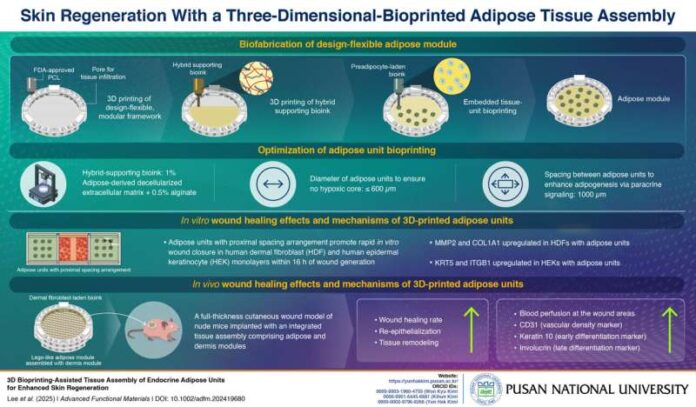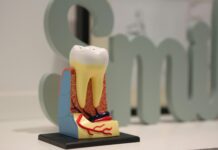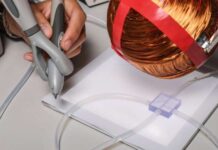As an endocrine organ, adipose tissue secretes a variety of chemicals. They control the healing of other injured tissues, such as the skin. Therefore, it may be possible to reengineer adipose tissues to repair the injured organs. Moreover, regenerative medicine has been transformed by 3-dimensional (3D) bioprinting technology. It makes it possible to create functional and designed 3D organs or tissues, including adipose tissues.
The therapeutic use of 3D-printed adipose tissues is hampered by the fact that the native structure and densely packed lipid droplets of adipose tissues cannot be replicated by the tissue biofabrication techniques now in use.
A study team from Pusan National University in Korea, under the direction of Assistant Professor Byoung Soo Kim, has created a unique adipose tissue biofabrication technique to get around this restriction. On February 2, 2025, this research was published online in Advanced Functional Materials.
The study’s high point was the creation of a hybrid bioink. It consists of 0.5% alginate and 1% adipose-derived decellularised extracellular matrix. This mixed bioink encouraged the formation of preadipocytes, the progenitors of fat cells, while limiting their migration.
Dr. Kim states:
Under standard culture conditions, preadipocytes tend to proliferate and migrate, preventing the formation of lipid droplets that are essential for adipose tissue functions. The hybrid bioink developed in this study maintains the physiological properties of the adipose tissue.”
Biofabrication Technique
The scientists created a tissue assembly including adipose and dermis modules to investigate the impact of bioprinted adipose tissues in vivo. Mice with skin wounds were implanted with this tissue assembly. The results showed that the tissue assembly regulated the expression of proteins linked to skin cell differentiation. Furthermore, it also induced reepithelialization, tissue remodeling, and blood vessel development, all of which aided in healing wounds in mice.
These findings highlight the promise of bioprinting as a key technique in regenerative healthcare and precision medicine, propelling a new wave of medical innovation. Hospitals and research facilities will probably use personalized bioprinting systems more frequently for patient treatments. And medical research as the commercialization of 3D bioprinting technology is anticipated to drive substantial market expansion in customized tissue fabrication.
According to the lead author, Jae-Seong Lee:
The 3D bioprinted endocrine tissues enhance skin regeneration, indicating their potential applications in regenerative medicine. While current fat grafting procedures suffer from low survival rates and gradual resorption, our hybrid bioinks enhance endocrine function and cell viability, potentially overcoming these limitations. This approach could be particularly valuable for treating chronic wounds such as diabetic foot ulcers, pressure sores, and burns.




